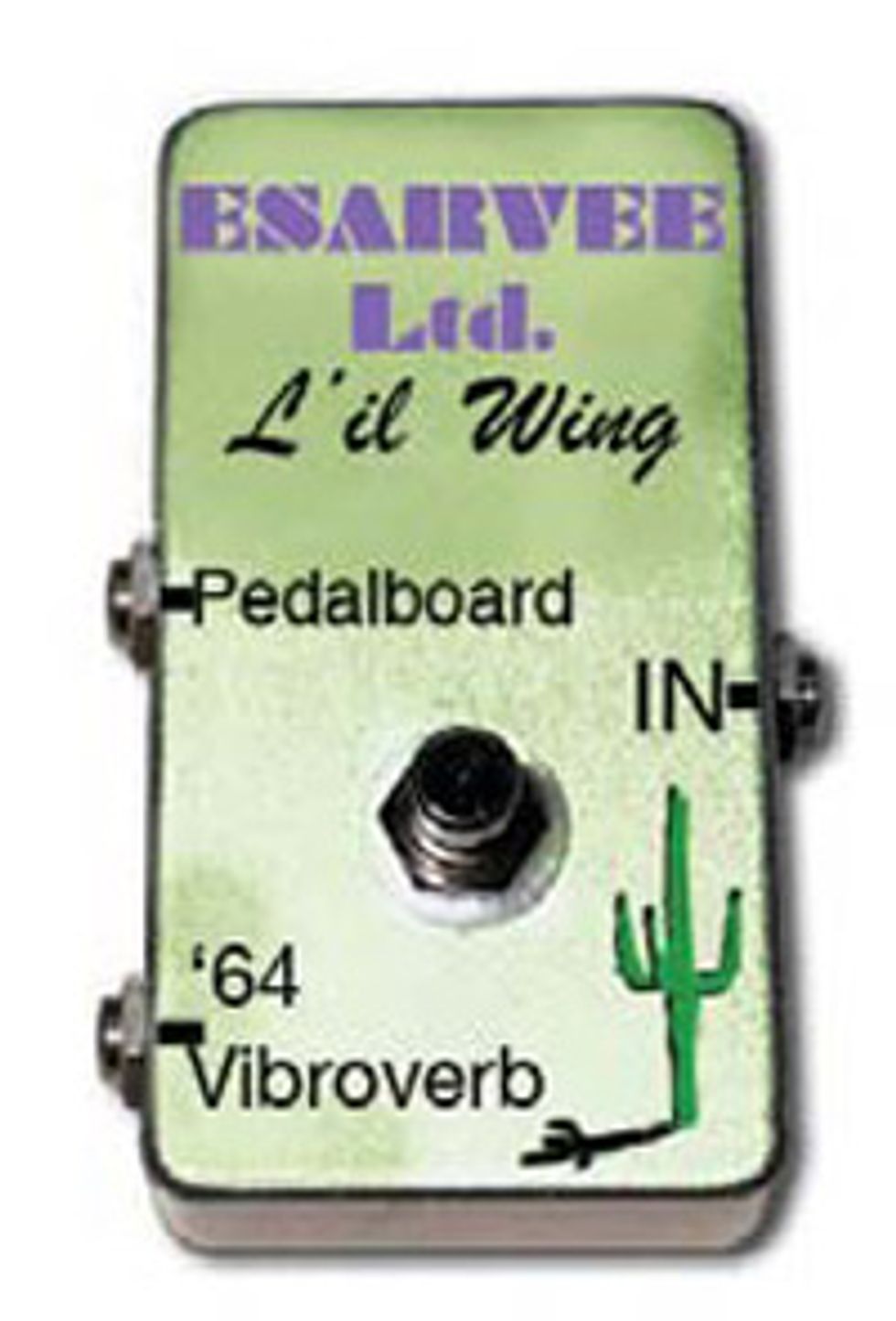 |
Actually, the idea came to me after chatting with a client who had called with a question about stompboxes. The guy was an SRV disciple who’d heard that I’d gotten a guided tour of Stevie’s stage rig by the man himself and wanted to know which effects pedal could deliver what he called the “SRV clean tone.” It seemed that my inquisitive caller had many boxes—distortion, boost, fuzz, delay, chorus, and so on—but none for the aforementioned clean sound. After some deliberation, I suggested a box made by Fender called the Vibroverb. My caller paused, and then picked my brain about where to find one. It was at that moment I imagined an entire line of switchers for those who were bold enough to explore the sound of a naked guitar amp.
Analog Man later gave me a DVD entitled The Art of the Stompbox from The Museum of Making Music in Carlsbad, California. The video featured Nels Cline and Henry Kaiser jamming relentlessly with a huge smorgasbord of effects pedals. Mike hoped I’d come to understand the signal chain from his perspective. Coincidentally, I had started hearing the phrase “pedal-friendly” being used in reference to pickups and guitars. In my newly enlightened state, I set out to understand what it is that makes a guitar capable of bonding with these picky little pedals.
As a builder, I’m mostly interested in giving each instrument character—a voice that can be heard when you plug the guitar directly into an amp. I naturally gravitate to building expressive instruments that stand on their own, and regard effects as “sweeteners,” as opposed to the basis for someone’s sound. In my recent column on choosing pickups, I revealed how I even consider pickups to be completely secondary to the guitar’s voice. But what do other builders think? Do they ever consider this electronic friendliness issue when designing their wares? Not surprisingly, Jason Lollar (who builds both guitars and pickups) views things similarly to me. “I want to hear definition and tone coming out the other end,” he reveals. “I’m more of a plug-straight-into-the-amp guy.”
Still, he reckons that lower-output pickups are the key to getting great sounds from both big pedalboards and high-gain preamp circuits. “Even metal guys, like Jimi Hazel and the guys in Metallica, are using lower-output pickups,” says Lollar. Evan Skopp at Seymour Duncan concurred that a “sweet, clean tone is a better platform to get good results from pedals.”
Greg Timmons at Lollar’s shop brought it into sharp focus in a way I completely understood. “I’m a gigging musician,” he said, “and if I have to rent a backline amp, I’m going to use my pedalboard to give me the sound I need. There are pickups that are highly EQ’d, as opposed to organic and musical. Those EQ’d pickups don’t tend to work as well with effects.”
To gain a little more insight, I decided to test a number of different pickups in a single guitar to see what made a difference. In order to facilitate pickup swapping, I threw together a “mule” test guitar that allowed me to change pickups from the rear without having to detune the strings. After a few swaps, a pattern seemed to emerge that followed what the pickup guys were saying.
First off, as Timmons suggested, the pickups with significant midrange bumps seemed to get lost more quickly when I applied fuzz-type distortion. Single-coils were very adept at cutting through delays and other time-based effects, but their signal-to-noise ratio made boosting them a hit-or-miss situation overall. Lower-power actives, like the EMG H model, worked brilliantly with multiple effects where the basic sound of the guitar was heavily modified, but still required some moderate boosting for convincing, fat lead tones.
Trying to draw a conclusion that relates directly to guitar design, I reasoned that a guitar that provides a clear and even response with lots of string definition might be the best match for a hot date with a pedalboard. As I moved between the guitars in my test stable, this seemed to pan out. Spruce-topped, long-scale guitars sliced through multiple fuzz applications without creating too much sag, while fat, humbucker-equipped mahogany guitars seemed to almost create a signal-chain traffic jam. However, like so many puzzles in the guitar universe, everything seemed to be a tradeoff. I wasn’t finding one instrument that covered it all. Still, I wondered if there was a way to change the output and resonant frequency of a pickup designed for pedals without sacrificing the pure tone and character of a bold, passive pickup. Like my A-B box comedy-pedal concept, I’m going to have to work on that one—and that’s no joke.
Jol Dantzig
Noted designer, builder, and player Jol Dantzig founded Hamer Guitars, the first boutique guitar brand, in 1973. Since then, he has worked or recorded with many of the most talented and famous names in music. Today, as the director of Dantzig Guitar Design he continues to help define the art of custom guitar.
























































